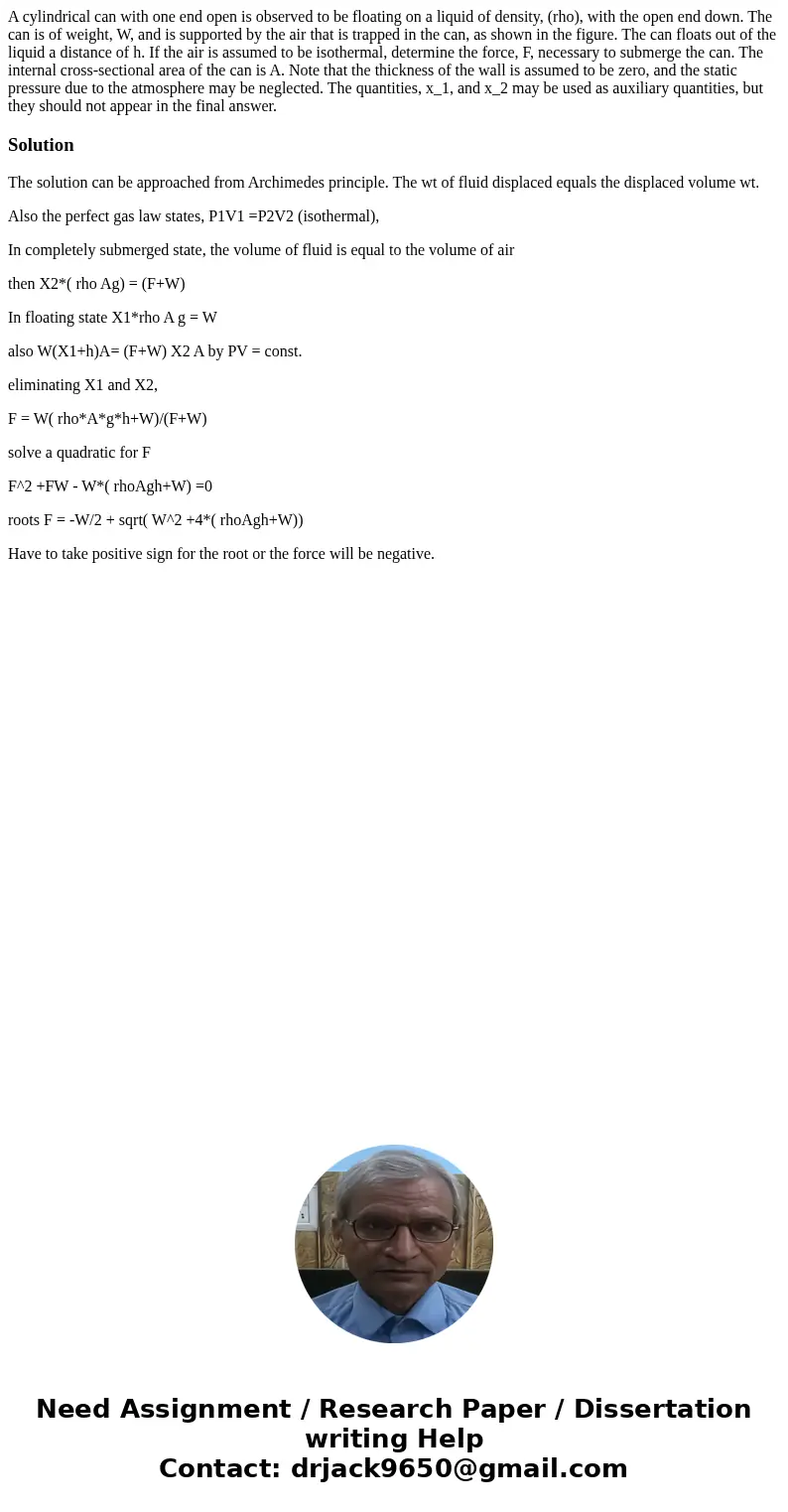A cylindrical can with one end open is observed to be floati
A cylindrical can with one end open is observed to be floating on a liquid of density, (rho), with the open end down. The can is of weight, W, and is supported by the air that is trapped in the can, as shown in the figure. The can floats out of the liquid a distance of h. If the air is assumed to be isothermal, determine the force, F, necessary to submerge the can. The internal cross-sectional area of the can is A. Note that the thickness of the wall is assumed to be zero, and the static pressure due to the atmosphere may be neglected. The quantities, x_1, and x_2 may be used as auxiliary quantities, but they should not appear in the final answer. 
Solution
The solution can be approached from Archimedes principle. The wt of fluid displaced equals the displaced volume wt.
Also the perfect gas law states, P1V1 =P2V2 (isothermal),
In completely submerged state, the volume of fluid is equal to the volume of air
then X2*( rho Ag) = (F+W)
In floating state X1*rho A g = W
also W(X1+h)A= (F+W) X2 A by PV = const.
eliminating X1 and X2,
F = W( rho*A*g*h+W)/(F+W)
solve a quadratic for F
F^2 +FW - W*( rhoAgh+W) =0
roots F = -W/2 + sqrt( W^2 +4*( rhoAgh+W))
Have to take positive sign for the root or the force will be negative.

 Homework Sourse
Homework Sourse